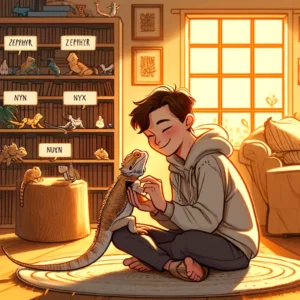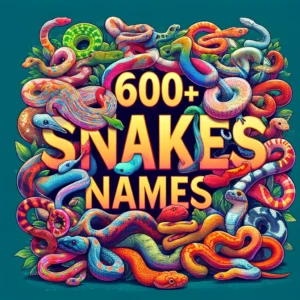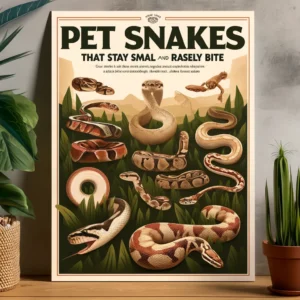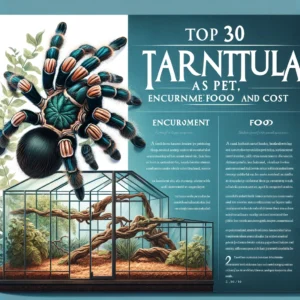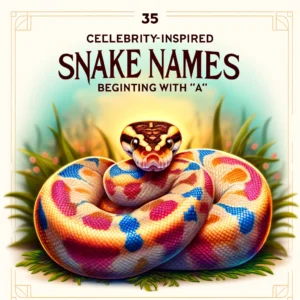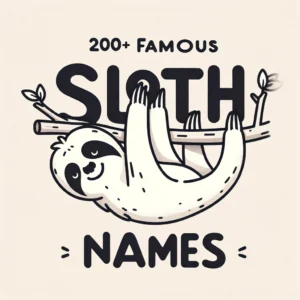Introduction
Bearded dragons, known scientifically as Pogona, have become one of the most popular reptilian pets across the globe, thanks to their docile nature and unique appearance. Originating from the arid, rocky environments of Australia, these fascinating creatures have a rich history and come in a variety of colors, each with its own expected lifespan and specific care needs. This guide will explore the different types of bearded dragons based on their coloration, delve into their history, and provide essential information on their diet, cost, and enclosure requirements.
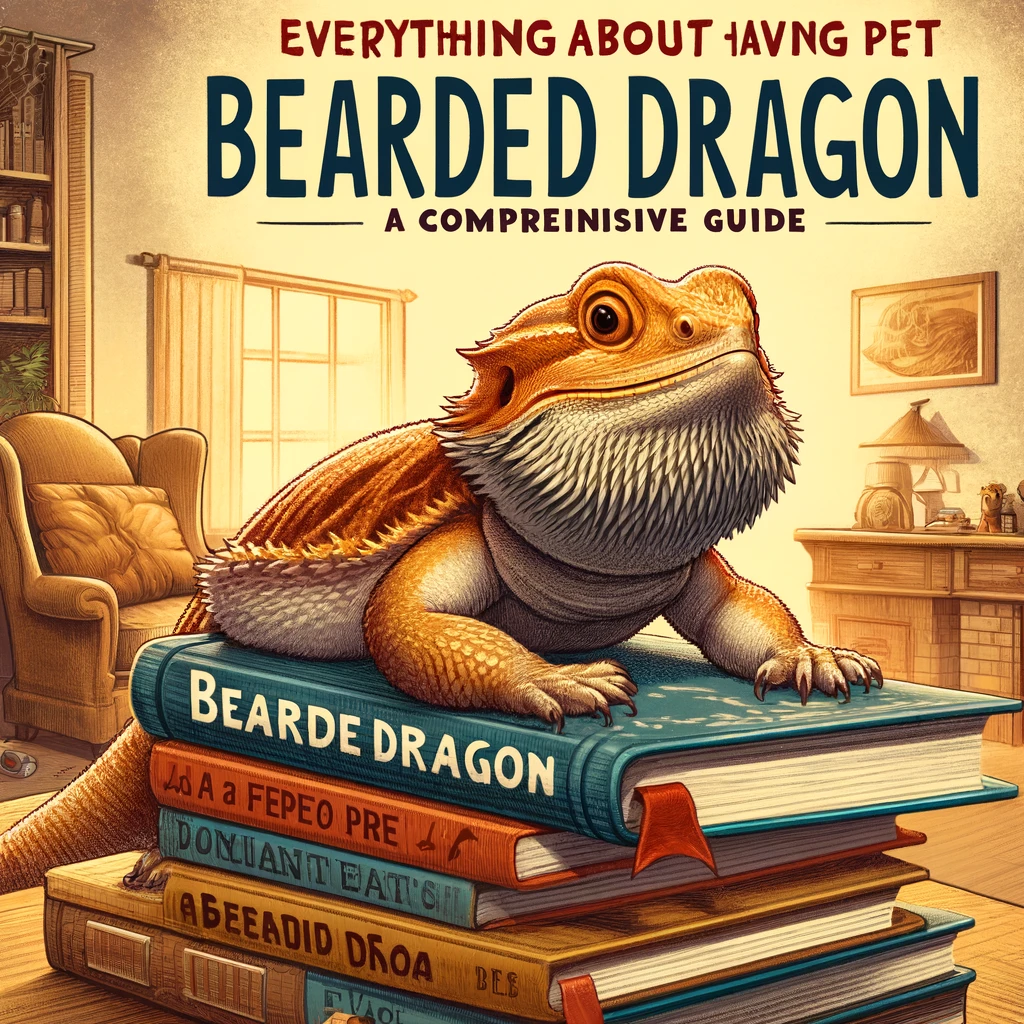
Types of Bearded Dragons
Bearded dragons are primarily differentiated by their color morphs, which have been selectively bred for in captivity. Below is a table summarizing the most common types, their colors, and average lifespans:
| Type | Color | Average Lifespan |
|---|---|---|
| Standard | Brown/Grey | 8-12 years |
| Red | Various shades of red | 8-12 years |
| Yellow/Gold | Yellow to gold | 8-12 years |
| Orange | Orange | 8-12 years |
| White | Silvery-white | 8-12 years |
| Leatherback | Smooth, reduced scales; varies in color | 8-12 years |
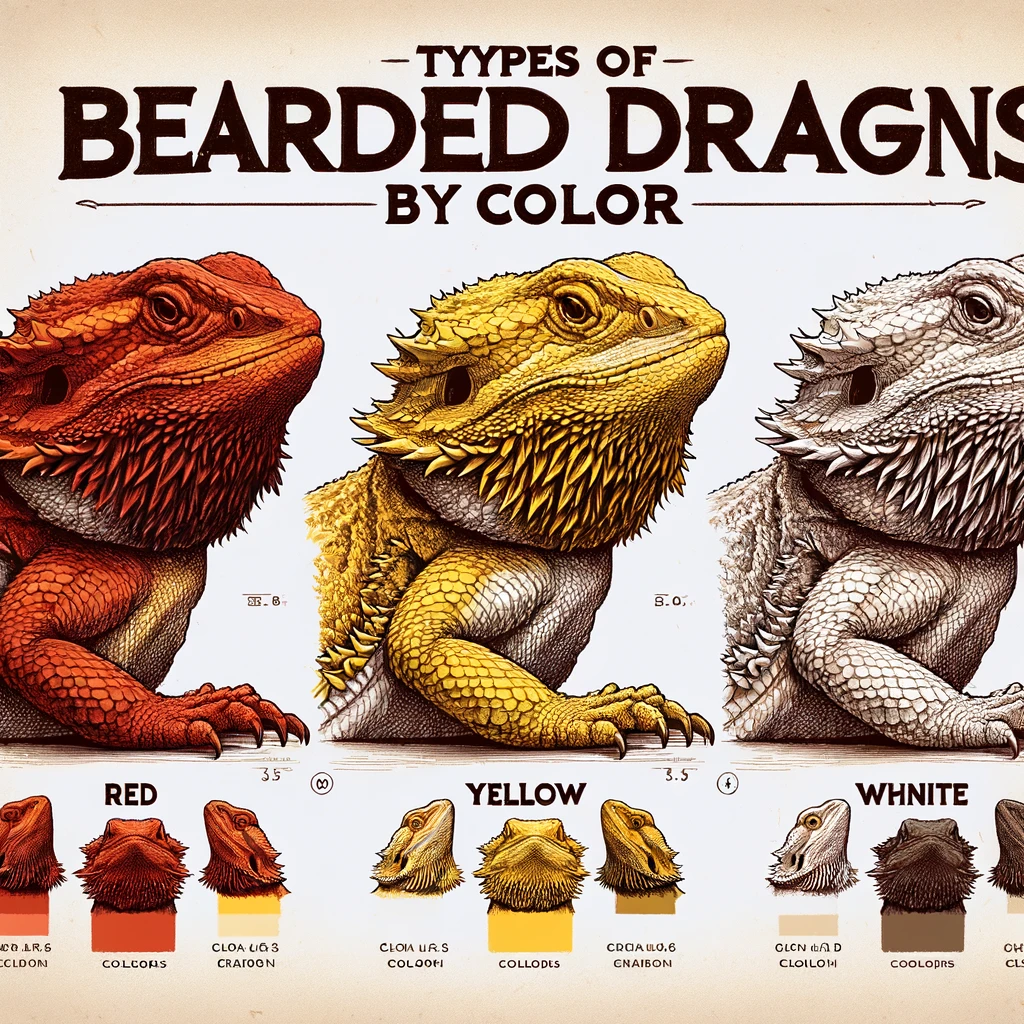
Categorizes common bearded dragon types by breed (species) and color morph
Below is a table that categorizes common bearded dragon types by breed (species) and color morph, including their average lifespans. Keep in mind that the specific care, environment, and genetics can influence the lifespan of a bearded dragon.
| Species/Breed | Color Morph | Average Lifespan |
|---|---|---|
| Pogona vitticeps | Standard/Wild | 10-15 years |
| Red | 10-15 years | |
| Yellow/Gold | 10-15 years | |
| Hypo | 10-15 years | |
| Translucent | 10-15 years | |
| Leatherback | 10-15 years | |
| Silkback | 7-12 years | |
| Pogona minor | Standard/Wild | 7-10 years |
| Pogona barbata | Standard/Wild | 10-15 years |
| Pogona henrylawsoni | Standard/Wild | 10-15 years |
- Standard/Wild Type: The natural coloration, usually a mix of browns and tans.
- Red: Ranges from bright red to deep maroon.
- Yellow/Gold: Bright yellow to a rich gold color.
- Hypo (Hypomelanistic): Has reduced black pigmentation, making the dragon lighter in color.
- Translucent: Has a semi-transparent look, especially noticeable in the skin around the eyes.
- Leatherback: Characterized by smaller scales for a smoother back.
- Silkback: Very smooth skin due to almost no scales, resulting from breeding two leatherbacks.
History of Bearded Dragons
Bearded dragons were first described in the 1800s, but it wasn’t until the late 20th century that they gained popularity as pets. They are native to Australia and are found in various habitats, from deserts to woodlands. The “bearded” part of their name comes from the spiky scales under their throat which puff up when they are threatened, resembling a beard.
Food
Bearded dragons are omnivores, meaning they eat both plant-based and animal-based foods. Below is a basic list of foods suitable for bearded dragons:
- Insects: Crickets, mealworms, and dubia roaches.
- Vegetables: Leafy greens like kale and arugula, and other vegetables like squash and sweet potato.
- Fruits: Occasional treats like berries, apples, and melon.
It’s important to ensure a balanced diet and to avoid feeding them insects caught in the wild due to the risk of pesticides and parasites.
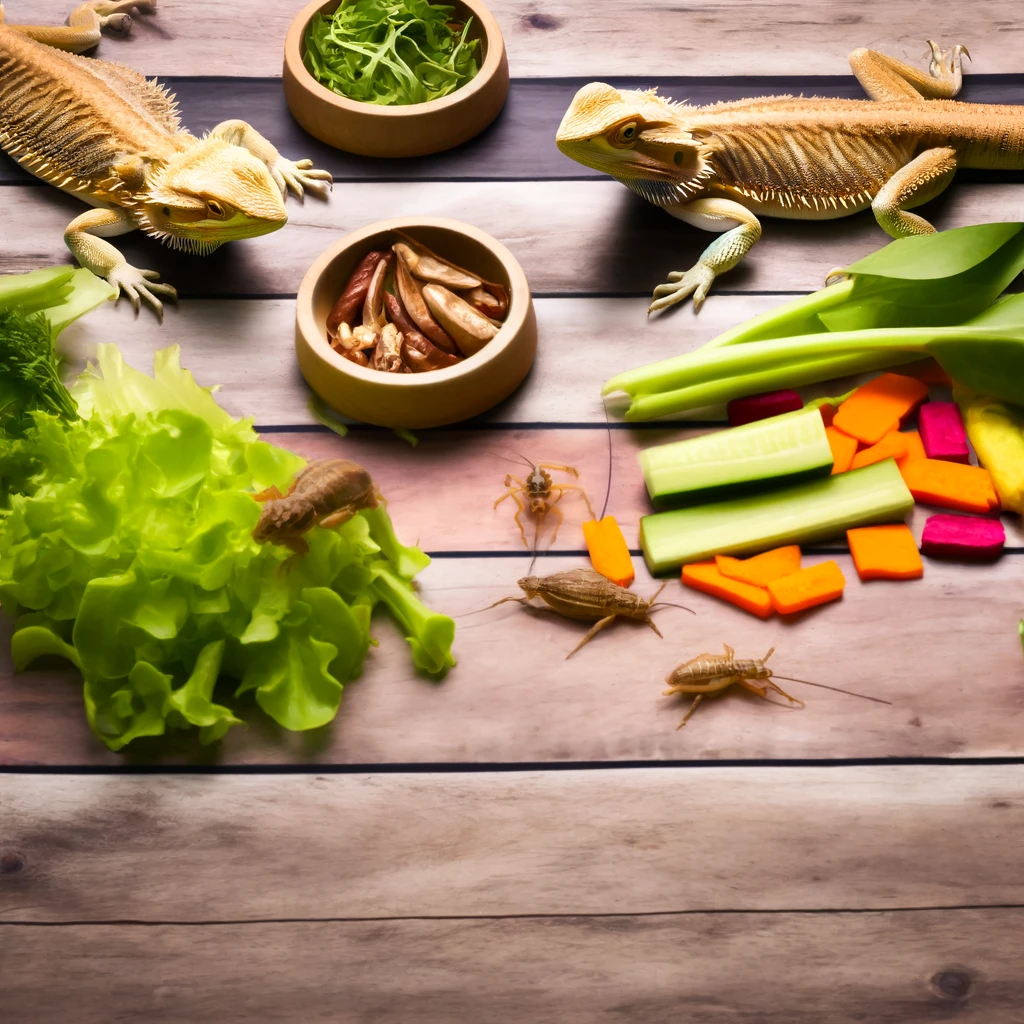
Cost
The cost of owning a bearded dragon can vary widely depending on the type and the initial setup. Here’s a rough breakdown:
- Bearded Dragon: $30-$100 for common types, up to $300 or more for rare colors.
- Enclosure and Setup: $200-$400, including the tank, lighting, and heating.
- Ongoing Costs: $20-$30/month for food, substrate, and any vet visits.
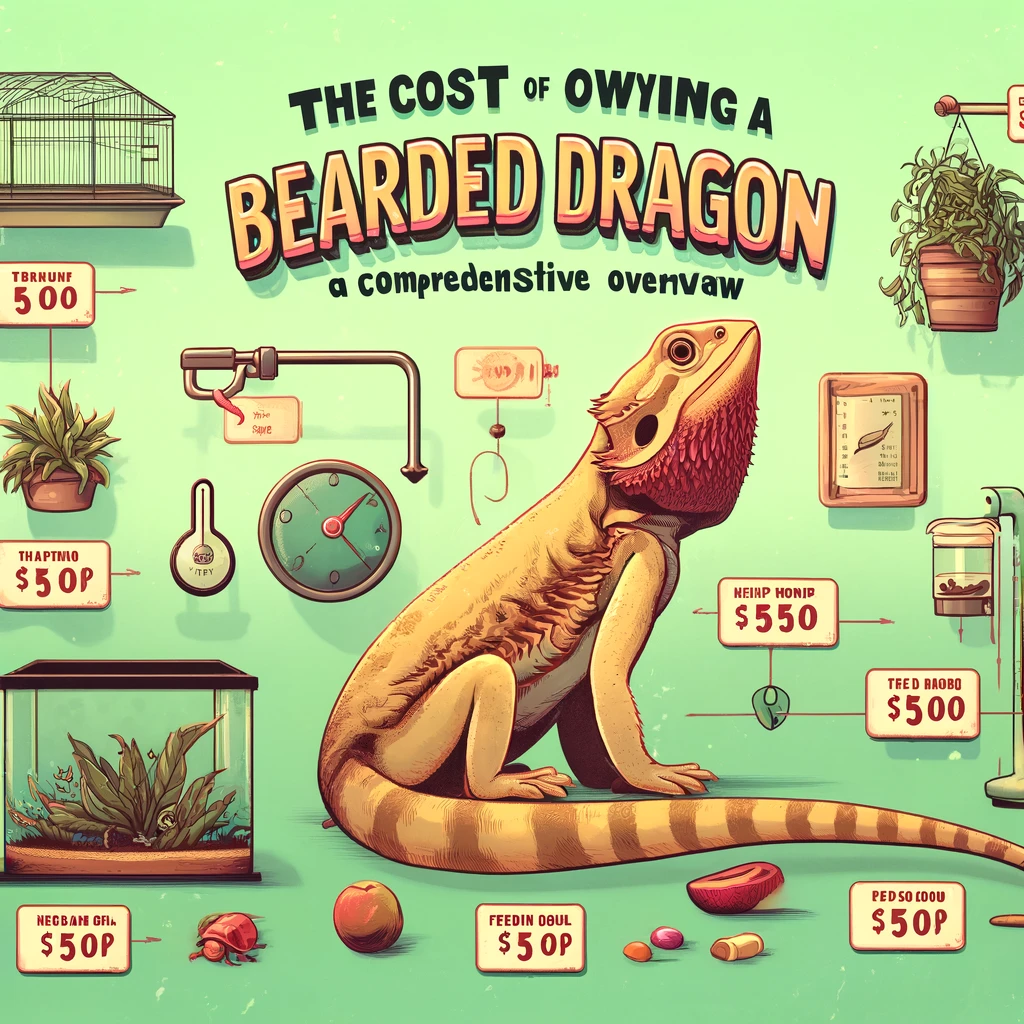
The Best Enclosure for Bearded Dragons: A Guide Divided by Age
Creating the perfect home for a bearded dragon is essential for its health, happiness, and overall well-being. Bearded dragons, or Pogona, are popular pets known for their personable demeanor and relatively easy care requirements. However, their enclosure needs vary significantly as they grow from hatchlings to juveniles and eventually into adults. This article provides a detailed guide on the best enclosure setups for bearded dragons at different stages of their life.
Hatchlings (0-2 Months)
Enclosure Size
For hatchlings, a 20-gallon tank is typically sufficient. It provides ample space for them to explore without being so large that they have difficulty finding their food.
Setup Essentials
- Substrate: Newspaper, paper towels, or reptile carpet. Avoid loose substrates to prevent ingestion.
- Heating: A basking spot with a temperature of about 100-110°F and a cooler area around 85°F.
- Lighting: UVB light is crucial for their growth and health.
- Decor: Minimal, with a focus on simple hides and a basking spot.
Feeding Area
Designate a corner of the tank for feeding to help maintain cleanliness.
Juveniles (3-11 Months)
Enclosure Size
Upgrade to a 40-50 gallon tank to accommodate their rapid growth and increased activity level.
Setup Essentials
- Substrate: Reptile carpet or tile. You may start to introduce non-toxic, fine sand if desired.
- Heating: A basking spot at 100-110°F with a gradient down to about 80°F in the cooler area.
- Lighting: Continued UVB lighting to support their development.
- Decor: More complex structures for climbing and hiding, including branches and rocks.
Feeding Area
A larger area may be designated for feeding, including space for both live food and greens.
Adults (12 Months and Older)
Enclosure Size
A minimum of a 75-gallon tank is recommended for adult bearded dragons to ensure they have enough space to move around, bask, and explore.
Setup Essentials
- Substrate: Tile, reptile carpet, or a mix including non-toxic, play sand, and soil mixture for digging behavior.
- Heating: A basking area maintained at 95-105°F and a cool area around 80°F.
- Lighting: Ensure continuous UVB light exposure to aid in calcium absorption and prevent metabolic bone disease.
- Decor: Offer a variety of hides, climbing structures, and basking spots to encourage natural behavior.
Feeding Area
Establish a dedicated area for both live feed and vegetables, ensuring it’s cleaned regularly to prevent the buildup of bacteria.
General Tips Across All Ages
- Hygiene: Regular cleaning is crucial to prevent the buildup of harmful bacteria and parasites.
- Water: Always provide a shallow dish of fresh water, even if your dragon doesn’t drink often from it.
- Temperature Gradient: Essential for thermoregulation; use thermometers to monitor.
- Humidity: Maintain around 30-40% humidity, monitored with a hygrometer.
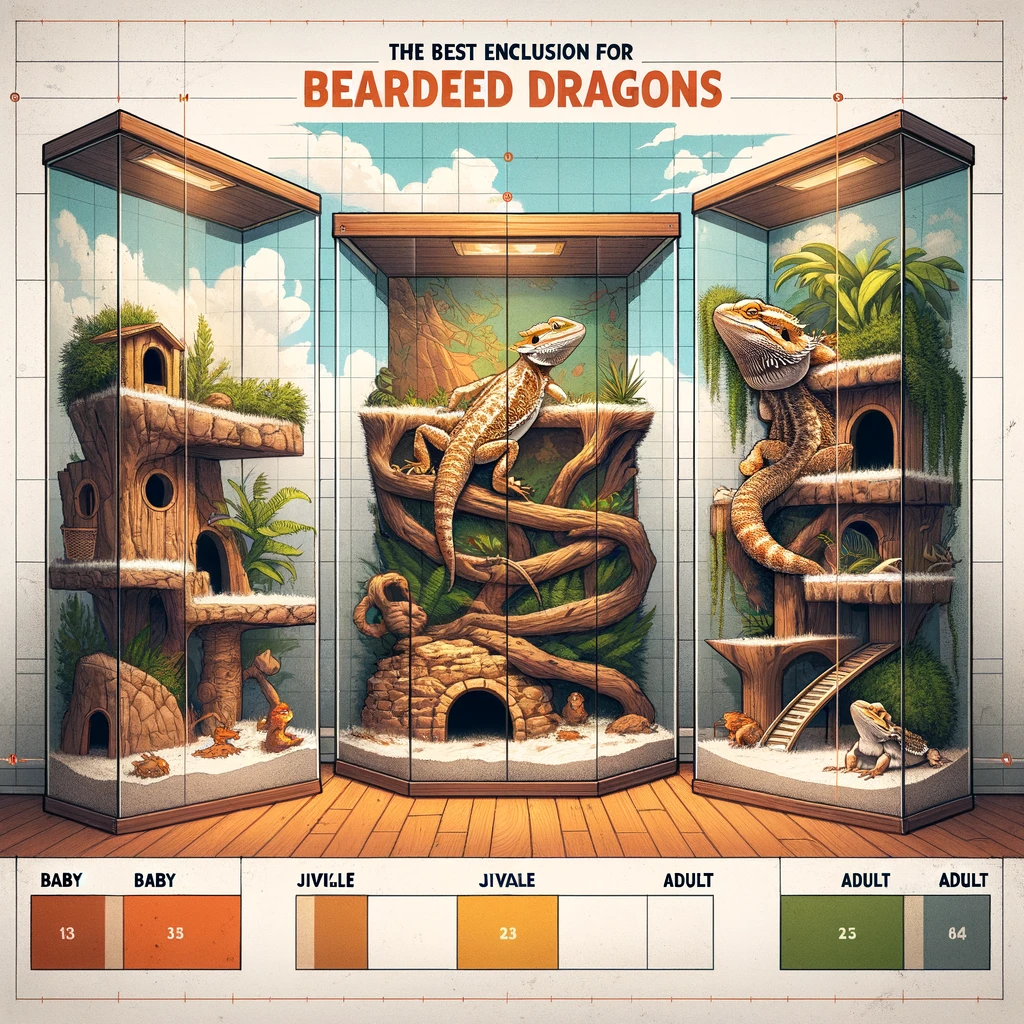
Conclusion
Caring for a bearded dragon requires commitment and knowledge of their specific needs, from the right diet to the ideal enclosure setup. By understanding the different types by color, their lifespan, and their history, along with the necessary care requirements, you can ensure a healthy and happy life for your scaly friend. Whether you’re drawn to a fiery red or a tranquil white bearded dragon, the joy and companionship they bring make the journey worth it.
The well-being of a bearded dragon greatly depends on its living environment. By tailoring the enclosure to suit the age and growth stage of your bearded dragon, you ensure their habitat supports their health and happiness. Regular updates and modifications to the habitat will cater to their evolving needs, mimicking their natural environment as closely as possible and providing a stimulating and safe home for them to thrive in.
FAQs:
Q: What is a bearded dragon?
A: A bearded dragon is a type of lizard, scientifically known as Pogona, native to Australia. They are popular pets due to their docile nature and distinctive appearance, including a “beard” of spiny scales that can puff up.
Q: How long do bearded dragons live?
A: With proper care, bearded dragons can live for 8 to 12 years in captivity.
Q: What do bearded dragons eat?
A: Bearded dragons are omnivores. Their diet consists of a mix of insects (like crickets and mealworms), vegetables (such as leafy greens and squash), and occasional fruits.
Q: How often should I feed my bearded dragon?
A: Hatchlings should be fed small portions of insects three times a day, while juveniles can be fed twice daily. Adults thrive on a daily diet of leafy greens and vegetables with insects every other day.
Q: What size enclosure does a bearded dragon need?
A: A hatchling can start in a 20-gallon tank, but an adult bearded dragon will require at least a 75-gallon tank to live comfortably.
Q: What type of lighting is required for a bearded dragon’s enclosure?
A: Bearded dragons need both UVB light for vitamin D production and a basking light to maintain their body temperature.
Q: How can I tell if my bearded dragon is healthy?
A: A healthy bearded dragon will have clear, bright eyes, a firm body, be active, and have a good appetite. Signs of illness include lethargy, loss of appetite, discolored skin, and abnormal droppings.
Q: Do bearded dragons enjoy being handled?
A: Yes, most bearded dragons become accustomed to and even enjoy human interaction with gentle handling from a young age. Always support their body fully and avoid sudden movements.
Q: How can I ensure my bearded dragon stays hydrated?
A: Provide a shallow water dish in their enclosure, mist their skin lightly, and offer moisture-rich vegetables. Bearded dragons may not drink often but absorb water through their skin and food.
Q: Can bearded dragons live with other pets?
A: While bearded dragons can coexist with humans and other pets if properly introduced and supervised, they should not share an enclosure with other bearded dragons or different species to prevent stress and aggression.
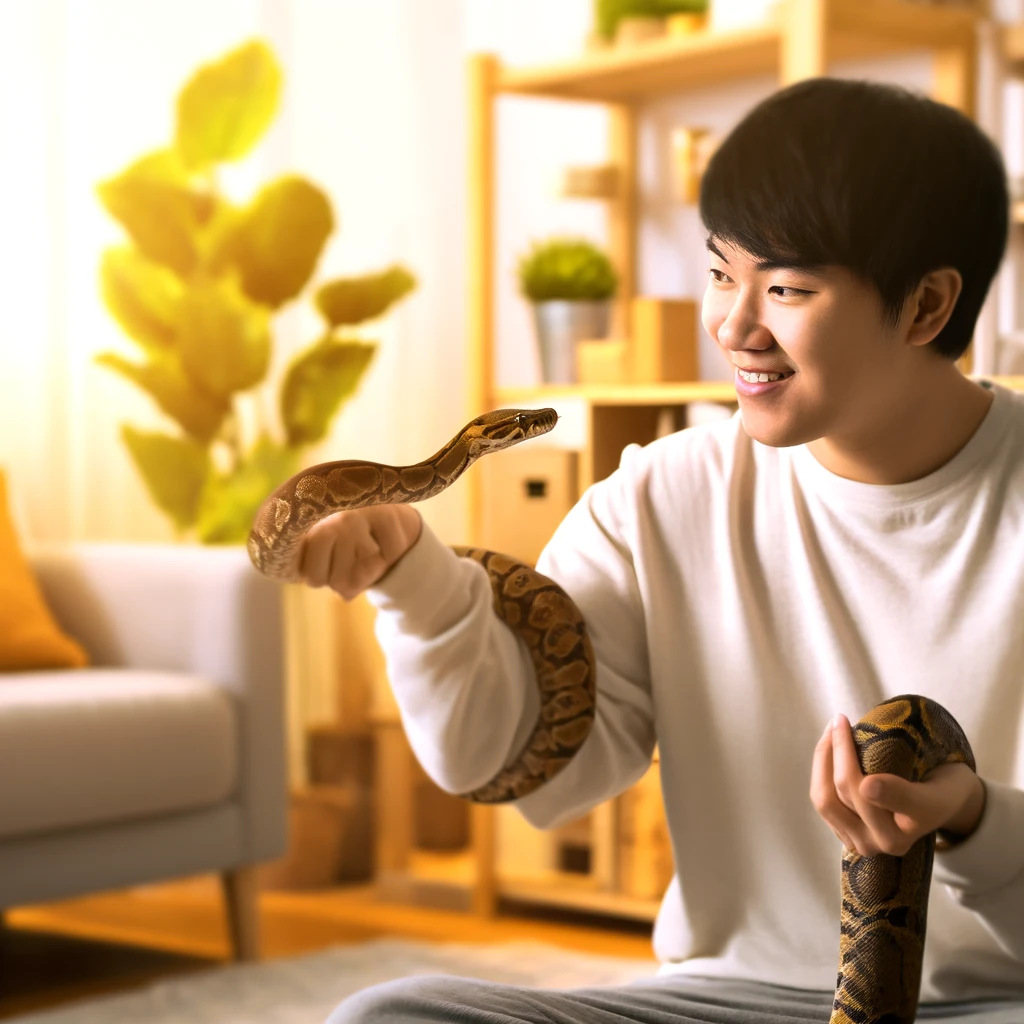
Jordan Taylor is a seasoned pet care expert and a vibrant contributor to Petmaw.com. With over a decade of experience in veterinary science, Jordan brings a wealth of knowledge and a deep passion for animals to every article. After earning a degree in Veterinary Medicine from the University of Alaska Anchorage, Jordan spent several years working in a busy veterinary clinic, where they honed their skills in pet nutrition, behavior, and wellness.
Jordan’s love for animals isn’t just professional; it’s a fundamental part of their life. Home is shared with three rescue Sloth, two cats, and a small flock of backyard chickens, each with their own rescue story and special place in Jordan’s heart. This personal connection to animals shines through in Jordan’s writing, making their advice not only expert but also empathetic and practical for pet owners.
At Petmaw.com, Jordan is dedicated to providing pet owners with the latest research, trends, and tips in pet care, from innovative feeding strategies to understanding the subtle signs of pet health issues. Whether you’re a seasoned pet owner or new to the pet parenting world, Jordan’s insights aim to enhance the well-being of pets and deepen the human-animal bond.
In their spare time, Jordan is an avid hiker, often found exploring the trails with their dogs. They also volunteer at local animal shelters, offering their expertise and helping animals in need find forever homes. Jordan’s commitment to animal welfare and passion for sharing knowledge makes them a cherished member of the Petmaw.com family and a trusted guide for our readers.
